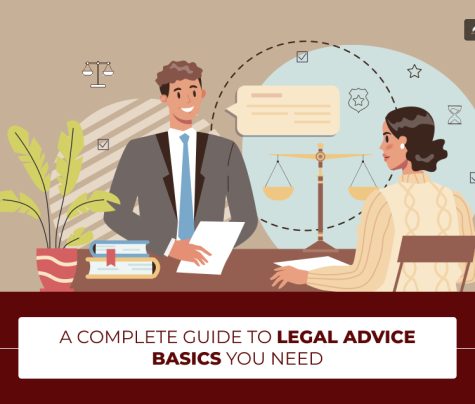
A sworn statement is a document that details facts relevant to a court or legal proceeding and can be used in court cases or other situations where sworn testimony is required. Creating a sworn statement can be difficult, particularly if you have never done one before.
If you are creating a sworn statement document for a legal proceeding, you may want more information on how to make it effective. Below, we give you tips on structuring your statement, writing a sworn statement effectively, and avoiding common mistakes. Take a look now to learn more.
Understanding Sworn Statements
If you’ve looked online at sworn statements and affidavit example documents, you will likely see how much they have in common. In fact, many people in the US actually call sworn statements affidavits. However, the two do have their differences.
Sworn statements can be used in a number of different settings. They may be used as evidence in court proceedings, as part of witness testimony, or in other legal and administrative matters.
A sworn statement does not need to be acknowledged by a notary public as an affidavit does, but it does need to include an endorsement signed by the declarant, which confirms that the statements made were truthful under penalty of perjury. Some federal courts and states allow sworn statements rather than affidavits, depending on the jurisdiction.
Other names that worn statements go by include ‘sworn declaration’ and ‘statement under penalty of perjury.’ It may be taken orally but is often written. It is also given under oath and filed with the clerk of a court.
Sworn statements may be used in court proceedings to save time and for witnesses who want to provide evidence but cannot attend court.
How to Know If You Need Sworn Statements?

Sworn statements can seem like a formal legal tool, but they are often essential in many situations. If you’re wondering whether you need one, understanding their purpose and the circumstances that call for them is key.
A sworn statement is a written document where you declare specific facts to be true under oath. It’s signed in the presence of an authorized official, like a notary public or a commissioner of oaths.
You might need this if you’re:
Involved in Legal Proceedings
First, people frequently need sworn statements in legal cases as evidence. For example, if you’re a witness in a lawsuit or a party to a case, you may need to submit a sworn statement detailing your version of events. Furthermore, these statements provide credibility and can be used in place of verbal testimony in some cases.
Filing Insurance Claims
Insurance companies often request sworn statements when filing an insurance claim—whether for a car accident, property damage, or medical expenses. Additionally, these help verify the details of your claim and ensure its validity.
Immigration or Government Applications
Immigration processes, such as visa applications or citizenship filings, sometimes require sworn statements to verify your relationship status, employment history, or residency.
Handling Business Disputes
In commercial matters, sworn statements can be evidence in contract disputes, financial matters, or compliance issues. For example, you might need one to confirm financial transactions or business agreements.
Confirming Personal or Family Matters
Finally, in cases like family disputes, custody battles, or estate planning, you can use sworn statements to confirm facts about relationships, responsibilities, or inheritance claims.
If you’re unsure whether a sworn statement is necessary, consider the following questions:
- Does the situation involve legal, financial, or government processes?
- Do you need to prove or verify specific facts to an authority or institution?
- Has someone (like a lawyer, court, or agency) requested a sworn statement from you?
If you answered “yes” to any of these, it’s likely time to create a sworn statement.
Who Can Help You Make Sworn Statements?

Creating a sworn statement isn’t something you should navigate alone, especially for an important legal or official purpose. While it may seem simple, the document must meet specific requirements to be valid. Here’s who can help you:
1. Lawyers
Firstly, lawyers are one of the most reliable resources when drafting sworn statements. They understand the legal language required to make your statement clear and enforceable.
They’ll ensure the facts are presented accurately and aligned with the document’s purpose. A lawyer can also help you tailor the statement to meet specific legal or procedural requirements, whether for a court case, insurance claim, or government filing.
2. Notary Publics
Secondly, notary publics are officials who have the authority to witness and notarize your sworn statement. While they don’t help you draft the content, they ensure the document is signed and sworn under oath correctly. Additionally, a notary public can make the process quick and efficient if you already have a draft prepared.
3. Legal Aid Organizations
If hiring a lawyer isn’t feasible, legal aid organizations can often assist with creating sworn statements. These groups provide free or low-cost legal services. They can guide you through the process if your case involves family law, immigration, or other personal matters.
4. Online Legal Services
In today’s digital age, many platforms offer templates and services to help you create sworn statements. While these are convenient, it’s important to ensure they meet the legal standards for your specific situation. If you choose this route, consider consulting a professional to review the final draft.
5. Paralegals or Document Preparers
Paralegals and legal document preparers can assist in drafting sworn statements, particularly if your needs are straightforward and don’t require extensive legal analysis. They’re more affordable than lawyers but still knowledgeable about legal requirements.
Structuring a Sworn Statement
There are a few items that must be included within your sworn statement. These are as follows.
- Personal details, including the name, age, occupation, and address of the declarant
- An in-depth and detailed account of the incident or event being recited
- An endorsement which states that the information included in the statement is true and subject to a penalty of perjury
- The declarant’s signature
- The date the sworn statement was created
Tips for Writing an Effective Sworn Statement
Sometimes, when you’re asked to write a sworn statement, you will be given an example or structure to follow. At other times, you might not. For this reason, we have collated our top tips for writing effective sworn statements below.
Make Sure You Understand The Purpose
Before beginning your sworn statement, you need to understand why you’re writing it in the first place. Ask someone or re-read our ‘Understanding Sworn Statements’ section if unsure.
Be Clear And Concise
This is a must. Don’t try to use flowery language or descriptions; just write in plain language and avoid using any terms, like business jargon, technical terms, or complex words, that may be difficult to understand or need further explanation.
Be Logical
For the most part, a sworn statement details a chain of events, so be logical in presenting this information. Make sure it is coherent, and try to make it chronological. You could use numbers or headings to ensure the reader can follow.
Be Truthful
Sworn statements are given under penalty of perjury, so your actions can have serious legal consequences if you aren’t truthful. Be accurate in everything you include; if you don’t know something, it is okay to say so.
Be Specific
Besides being truthful, you must also be highly specific. This means adding names, dates, locations, and other information supporting your statement and ensuring it is as detailed as possible.
Avoid Adding Opinions
Though it can be tempting, you shouldn’t add any opinions or speculation. Add what you know to be the truth and avoid other statements.
Review And Edit
Read over the statement and look for spelling errors that could be confusing. Consider having someone else read over it, too.
Follow Any Formatting Guidelines
Sometimes, you may have to submit a sworn statement using specific fonts, font sizes, margins, and more. Make sure you follow these guidelines if applicable.
Seek Legal Guidance
If you’re unsure of writing your sworn statement, consider seeking legal guidance. They can offer advice and ensure you’re including everything necessary.
Common Mistakes to Avoid When Writing a Sworn Statement
If you follow the guidelines and keep our tips in mind, you’re likely to create an acceptable sworn statement. However, there are some mistakes that people often make that you should be aware of.
- Exaggeration or understatement: Getting the balance right between these two can be difficult. Just stick to the truth and keep any emotions out of it to avoid over or understatements.
- Incomplete information: Try to include all crucial information. If you don’t know something, then ensure that it is recorded. Incomplete information can weaken your statement.
- Inconsistencies: Your statement must be consistent to avoid a challenge to your credibility. Having someone else read over it may help to prevent this.
Read Also:
- All You Need To Know About Procurement Contracts
- Elements of a Contract: Six Things Your Contract Must Have!
- Why Law Firms Outsource Their Contract Management Services?











0 Reply
No comments yet.